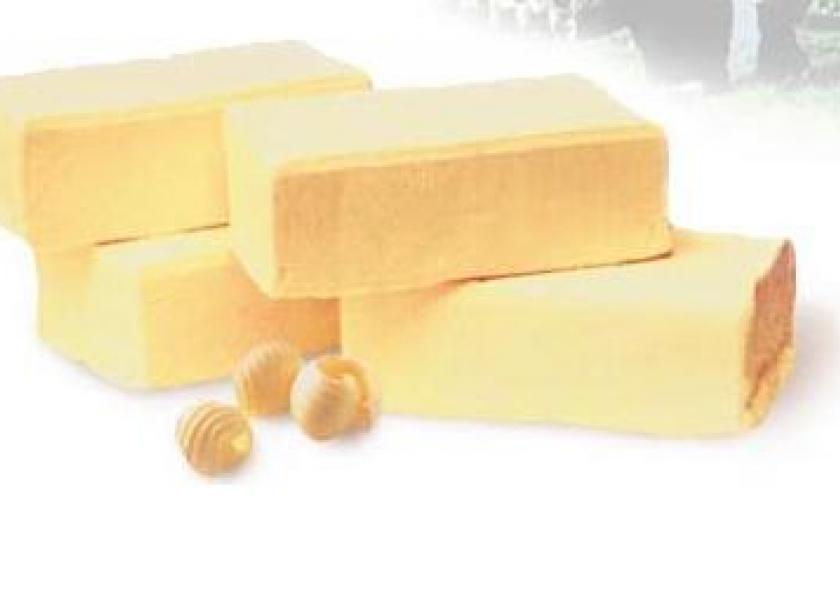High Prices Cure High Prices, But What about Butter?

Butter has really been the star of the show with a new all-time record high price established at $2.8225 on Aug. 22.
By: Robin Schmahl, AgDairy LLC
There are increasing discussions as to what the future holds for dairy prices at the end of this year, but primarily discussion is focused on next year.
Many producers are hard pressed to find a reason to hedge milk prices next year due to the substantial price discounts seen in milk futures contracts. The pattern for much of this year has been that cash prices have remained strong, requiring futures contracts to increase substantially as discounted futures needed to converge to cash. How long this pattern will continue is anyone’s guess, but we can be assured it will not last forever.
It has been a good year so far, and it will potentially remain that way through the end of the year. Demand is strong for dairy products and the push now is for obtaining enough to fill expected demand through the end of the year. Buyers are reluctant to purchase hand-to-mouth in the anticipation that prices may settle back somewhat before the end of the year and thus remain aggressive. Supplies are being purchased and forward contracted through the end of the year to make sure customers are taken care of.
Butter has really been the star of the show with a new all-time record high price established at $2.8225 on Aug. 22, 1.25 cents above the previous record set in early September 1998. Demand has been strong, especially in the export market. Exports rose nearly 42% during the first half of this year. Most of the business was the result of forward contracts being inked late last year and early this year due to U.S. price being lower than world price and very competitive. The U.S. Dollar was also lower helping to spur international interest.
Butter supply was initially forecast to increase due to butter production being projected to rise about 1%. However, manufacturers did not follow their usual pattern of aggressive churning, resulting in increasing supply. Manufacturers were aggressively producing 82% butter for the export market while keeping production in line with domestic demand. The desire was to produce what was ordered and little more as they attempted to keep plant inventory minimal.
The surge in exports and strong domestic demand resulted in butter stocks lower than desired, creating a grave concern that turned into buyer frenzy. Supply needed to be purchased whatever the cost and one company outbid the other to get it. Some in the industry believe price is way too high and may result in the loss of market share. We know our exports, although good, have been slowing. Exports in the second quarter have declined 35% from the amount posted in the first quarter. The Foreign Agricultural Service will release July export numbers early in September, giving us a good indication of the impact from high butter price and the increasing U.S. Dollar.
It is interesting to note that the last time July butter stocks were this low was in 2001. July butter stocks this year totaled 170.2 million pounds with the August price setting a new record. Butter price in August 2001 reached $2.2250, with July butter stocks at 112.3 million pounds. While making the same comparison to the previous price record set in 1998, butter stocks in July of that year totaled 51.0 million pounds.
Demand had consistently grown and the bright spot has been the increase of international market share. The industry needs to be careful that we do not sacrifice market share for the sake of the personal preference of larger supply or on the perception that supply will run out even though manufacturing continues. It is a balancing act and one that needs to be accomplished decently and in order.
Upcoming reports:
- August Federal Order class prices on September 3
- July Dairy Products report on September 4
- Milk cows and production final estimates 2008-2012 on September 4
- World Agricultural Supply and Demand report on September 11
Robin Schmahl is a commodity broker and owner of AgDairy LLC, a full-service commodity brokerage firm located in Elkhart Lake, Wisconsin. He can be reached at 877-256-3253 or through their website at www.agdairy.com.
The thoughts expressed and the data from which they are drawn are believed to be reliable but cannot be guaranteed. Any opinions expressed are subject to change without notice. There is risk of loss in trading and my not be suitable for everyone. Those acting on this information are responsible for their own actions. This material has been prepared by an employee or agent of AgDairy LLC and is in the nature of a solicitation. By accepting this communication, you acknowledge and agree that you are not, and will not rely solely on this communication for making trading decisions. Hypothetical or simulated performance results have certain inherent limitations. Simulated results do not represent actual trading. Simulated trading programs are subject to the benefit of hindsight. No representation is being made that any account will or is likely to achieve profits or losses similar to those shown. There is risk of loss in commodity trading may not be suitable for recipients of this communication.







